If you’re considering purchasing a riding lawn mower, one important factor to consider is its weight. Understanding the typical weight of a riding lawn mower can help you make informed decisions about which model to choose, as well as how to transport, store, and maintain it. Weight plays a crucial role in the mower’s performance and maneuverability, and it’s essential to choose the right mower for your lawn’s size and terrain. Let’s break it down and see exactly how much does a riding lawn mower weigh.
On average, riding lawn mowers weigh around 500 pounds, but this can vary based on the specific model and features included. Smaller models may weigh as little as 300 pounds, while larger, more powerful models can weigh up to 600 pounds or more Yard Blogger. Keep in mind that the fuel added to your mower also contributes to its overall weight, with each gallon of gas weighing approximately 6.3 pounds Survival Tech Shop.
When selecting the right riding lawn mower for your needs, consider not only the weight but also factors such as engine size, terrain-handling capabilities, and deck size. By weighing these factors, you’ll be able to choose a mower that can efficiently and comfortably tackle your lawn care tasks.
Types of Riding Lawn Mowers
When choosing a riding lawn mower, it’s essential to understand the different types available to find the perfect match for your lawn care needs. Here, you’ll learn about three primary categories: Gas-Powered, Electric, and Zero-Turn.
Gas-Powered
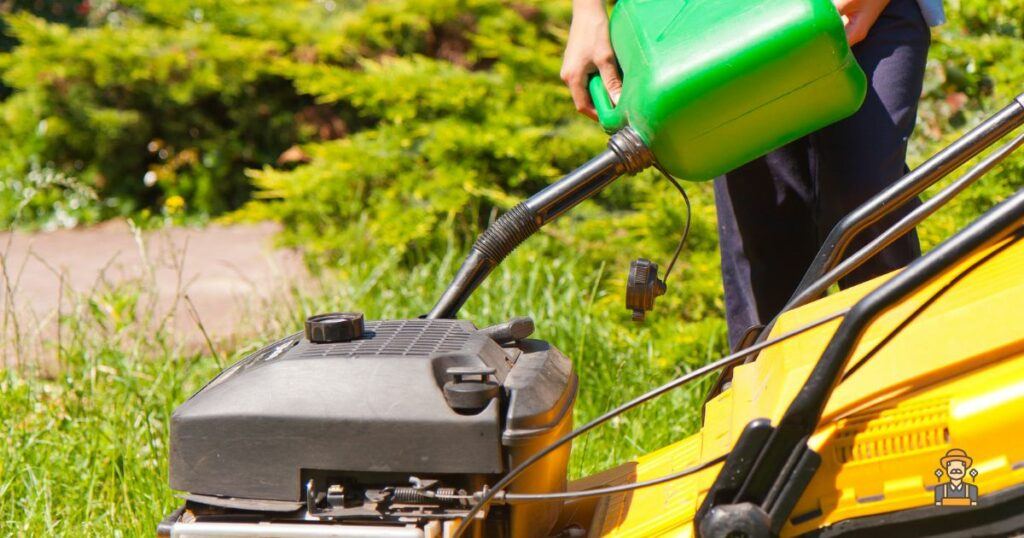
Gas-powered riding lawn mowers are popular choices for their power and convenience. They have robust engines that enable them to mow sizeable yards with ease – even uphill. These mowers typically weigh around 500 lbs, with the majority of their weight coming from the engine and deck. Gas mowers can handle various lawn sizes and terrain types. Some common features include:
- Engines ranging from small single-cylinders to powerful V-twins
- Cut widths of 42-in to 62-in for 1- to 5-acre lawns
- Responsive controls and easy maneuverability
Electric
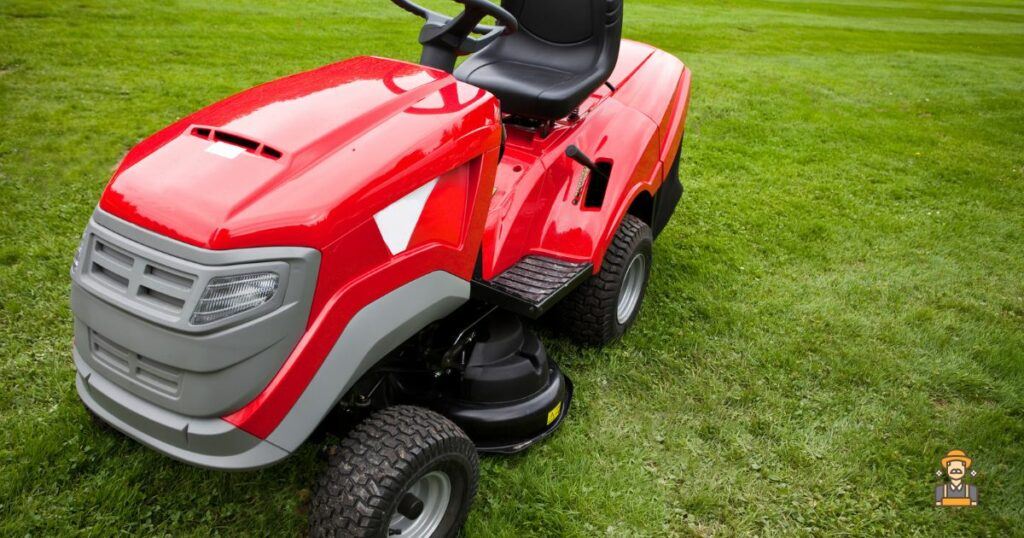
Electric riding lawn mowers are gaining traction as eco-friendly alternatives to gas-powered mowers. While they can be lighter than gas mowers due to their smaller engines and plastic bodies, electric mowers still offer adequate power for mowing tasks. Some benefits of electric riding lawn mowers include:
- Reduced noise and emissions
- Simplified maintenance requirements
- Cost savings on gas and oil
Keep in mind that electric riding lawn mowers may have a more limited range and run-time compared to their gas-powered counterparts, so they’re often better suited for smaller lawns and more level terrain.
Zero-Turn
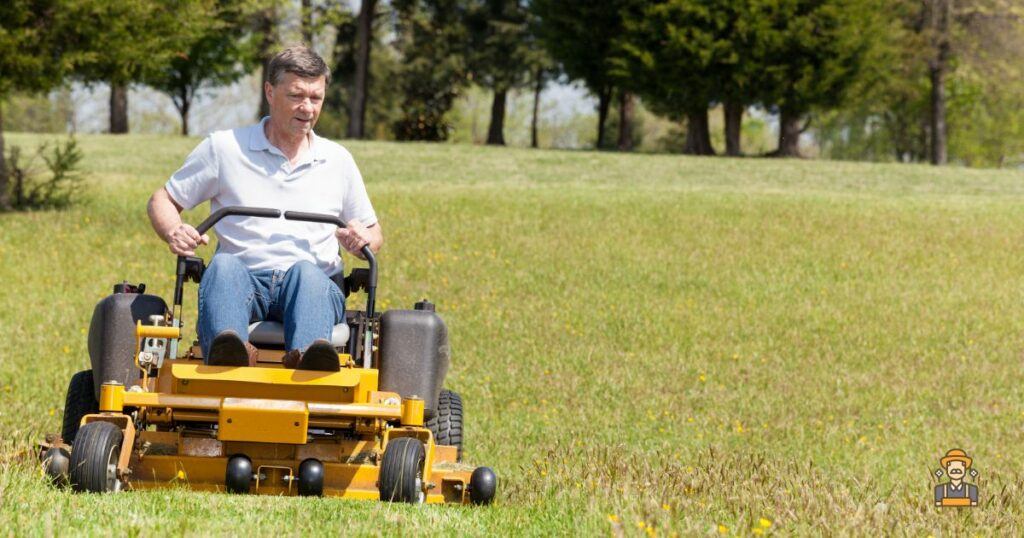
Zero-Turn riding lawn mowers, known for their maneuverability, are perfect for precise lawn care tasks or working around obstacles. They use zero-turn radius (ZTR) technology to focus on the mower deck’s rotation, enabling swift and precise steering adjustments. Zero-Turn mowers are generally heavier than other mower types, with some weighing up to 1,000 pounds or more. Features and benefits of Zero-Turn mowers include:
- Cut widths up to 60-in or greater for 5-acre lawns or larger
- Versatility in tackling multiple terrain types
- Speed and efficiency in completing mowing tasks
By understanding the differences between Gas-Powered, Electric, and Zero-Turn riding lawn mowers, you can make a more informed decision to best match your lawn care needs.
Average Weight of Riding Lawn Mowers
When considering the purchase of a riding lawn mower, it’s essential to understand the average weight of these machines. The weight of a riding lawn mower can impact its maneuverability, fuel consumption, and ease of transport. In this section, we will discuss the average weight of various types of riding lawn mowers.
An average riding lawn mower typically weighs between 250-500 pounds. However, this number can vary significantly depending on the type and features of the mower. Commercial models can weigh up to 800 pounds, while zero-turn machines can be even heavier, reaching 1,000 pounds or more.
Factors that can affect the weight of a riding lawn mower include:
- Materials used in construction: Plastic-bodied mowers are lighter, but steel-bodied mowers, which are heavier, offer more durability.
- Engine size: Larger engines will generally add to the overall weight of the mower.
- Attachments and accessories: Additional components, such as baggers or mulching kits, can increase the mower’s weight.
In addition to the weight of the mower itself, it’s important to consider the weight of fuel when calculating the machine’s total weight. Each gallon of fuel weighs approximately 6.3 pounds, and riding mower fuel tanks commonly hold between 1 to 3 gallons. This means that a full tank of gas can add up to 12.6 pounds to the overall weight.
In summary, while the weight of a riding lawn mower can vary greatly depending on its type, construction materials, and additional attachments, you can generally expect the average weight to fall between 250-500 pounds. Keep these factors in mind when choosing the right mower for your specific needs.
Factors Influencing Weight
Engine Size
The engine size of your riding lawn mower significantly impacts its overall weight. Typically, a larger engine will weigh more than a smaller engine. Engines with higher horsepower also tend to be heavier.
Fuel Tank
Your mower’s fuel tank contributes to its overall weight. The weight added by the fuel is approximately 6.3 pounds per gallon. Ensure that you consider the fuel storage capacity when assessing the weight of a riding lawn mower.
Cutting Deck
The cutting deck of a riding lawn mower plays a crucial role in determining its weight3. Wider cutting decks, designed for mowing larger areas, will be heavier than narrower decks. The materials used in the construction of the deck also affect the weight. Some common materials include aluminum, stamped steel, and fabricated steel, each with varying weight and durability properties.
Attachments and Accessories
Various attachments and accessories can add significant weight to your riding lawn mower. Some common attachments include:
- Wheel weights: These provide extra traction and stability, especially when operating on slopes or uneven terrain. Wheel weights can range from 25 to 75 pounds each.
- Batteries: Depending on the type and model of your lawnmower, batteries can also contribute to the weight.
- Towing capacity: If your mower includes a hitch or towing capability, the weight limit for towing may affect your mower’s overall weight and operation.
It’s crucial to keep these factors in mind when choosing a riding lawn mower, understanding how they influence performance and ease of use, and considering the specific tasks you need to accomplish with your machine.
Popular Riding Lawn Mower Models and Their Weights
In this section, you’ll learn about popular riding lawn mower models and their respective weights. We will cover four specific models: John Deere E120, John Deere S240, John Deere X300, and Cub Cadet XT2 SLX.
John Deere E120
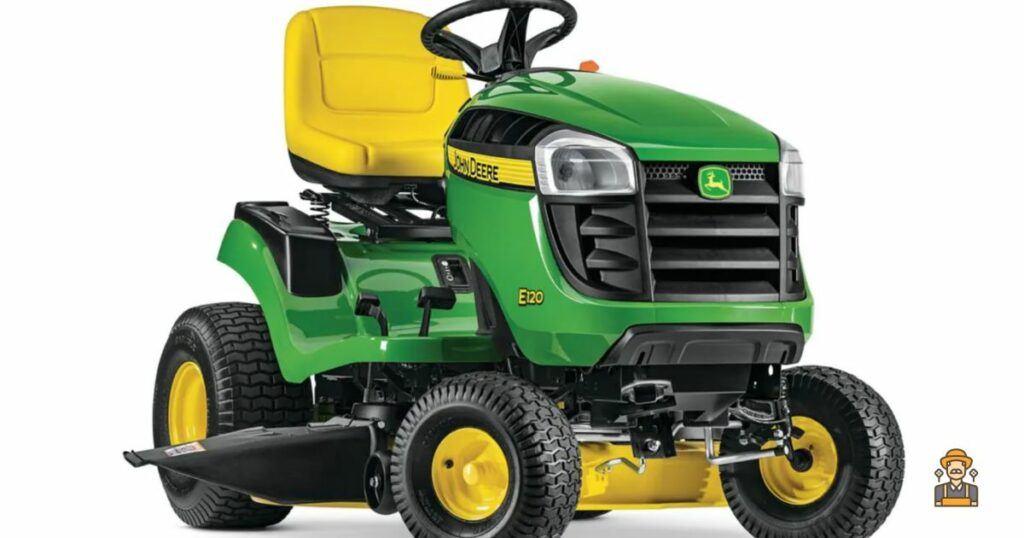
The John Deere E120 is a reliable and efficient riding lawn mower. This model features a 20 HP engine and a 42-inch cutting deck. It is designed to provide you with a smooth, comfortable mowing experience. The E120’s total weight is approximately 530 lbs, making it manageable for most lawn care tasks.
John Deere S240
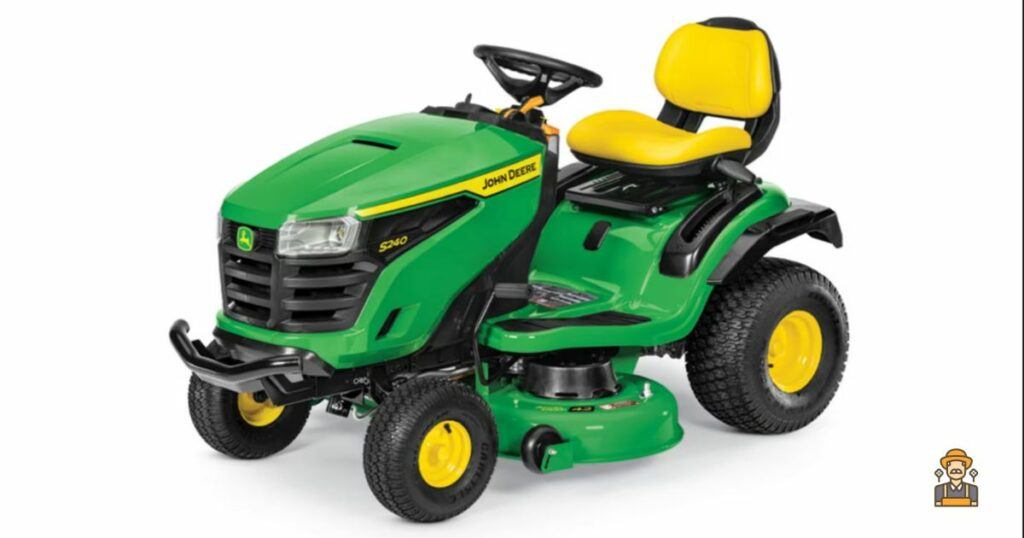
The John Deere S240 offers you an 18.5 HP engine with a 42-inch cutting deck. This lawn tractor is designed for more substantial lawn care projects and provides additional features compared to the E120. The S240’s weight is around 542 lbs, ensuring stability and easy maneuverability on various terrains.
John Deere X300

Moving up in both power and size, the John Deere X300 comes with a 20 HP engine and offers a 42-inch cutting deck. This lawn mower is designed for more challenging lawn care tasks and delivers superior performance over the previous models. The X300’s weight is approximately 670 lbs, adding more stability and control during operation.
Cub Cadet XT2 SLX
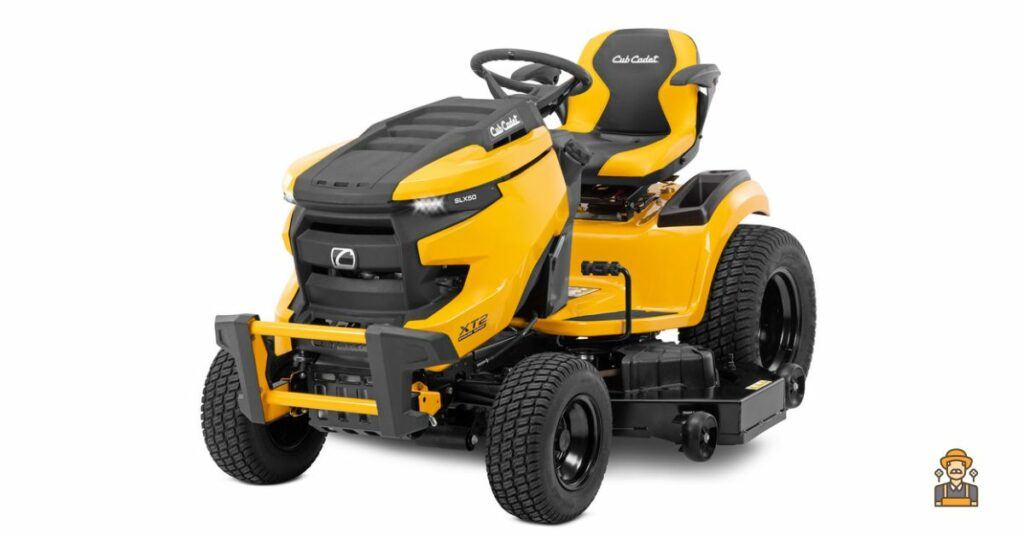
The Cub Cadet XT2 SLX is another popular riding lawn mower model that features a powerful 24 HP engine and a 46-inch cutting deck. This mower is designed to tackle larger mowing tasks and provides you with a comfortable, efficient experience. The XT2 SLX’s weight falls in the range of 580 lbs, making it easier to maneuver on various lawn surfaces.
To summarize, riding lawn mower weights vary depending on the model and features. Choosing the right mower for your specific lawn care needs is crucial, and understanding the weight of each model can help you make an informed decision.
Functional Impact of Weight
Performance
The weight of a riding lawn mower affects its performance. On average, riding lawn mowers weigh around 500 pounds, but they can range from 200 pounds to 1,000 pounds or more, depending on factors such as size, engine, and attachments source. A lighter riding lawn mower is generally easier for you to maneuver and control, but it may not perform as well on rough or uneven terrain.
Stability and Traction
Heavier riding lawn mowers often provide better stability and traction, especially on slopes and uneven terrain. Adding wheel weights can improve your mower’s balance, making it safer and more efficient. This added stability can also enhance overall performance, allowing you to cover larger areas more confidently.
- Heavier mowers: more stable on uneven terrain
- Lighter mowers: easier to maneuver and control
Transportation and Storage
Bear in mind that the weight of your riding lawn mower will also affect how easy it is to transport and store. Typically, heavier mowers can be more challenging to transport and may require specialized trailers or ramps. Storage for heavier mowers might require more floor space or reinforced surfaces to accommodate the extra weight. Lighter mowers might be easier to move around and occupy less storage space.
When it comes to batteries, keep in mind that their weight adds to your mower’s overall weight and can affect its performance, stability, traction, and transportation. It is essential to assess your lawn’s size, terrain, and any other considerations when choosing the optimal riding lawn mower weight for your needs.
Additional Lawn Mower Resources
If you are looking for more tutorials, walkthroughs and troubleshooting for Lawn Mowers, here are our most recent posts:
Additional Features and Considerations
When considering a riding lawn mower, it’s important to take into account additional features that can affect the mower’s performance and ease of use.
Grass Box

A grass box, also known as a grass catcher, is an essential feature for many homeowners who want a neat and clean lawn after mowing. A grass box collects clippings during the mowing process, saving you the time and effort of raking up the clippings later. When choosing a riding lawn mower, consider the capacity of the grass box, as larger capacities will require less frequent emptying. Some riding lawn mowers even offer convertible grass boxes, allowing you to easily switch between collection and mulching modes.
Side Discharge
If you prefer not to collect your grass clippings, you might be interested in a riding lawn mower with a side discharge feature. This feature will eject the clippings to the side as you mow, spreading them evenly across your lawn. Many riding lawn mowers offer an adjustable side discharge chute that allows you to control the direction and distance of the clippings, ensuring they are spread out evenly and not clumped together.
When evaluating different riding lawn mowers, remember to consider not just their weight, but also the additional features like grass box and side discharge that can have a significant impact on the functionality and convenience of the mower. Take time to thoroughly assess your lawn care needs and preferences before making a final decision on the right riding lawn mower for your yard.
